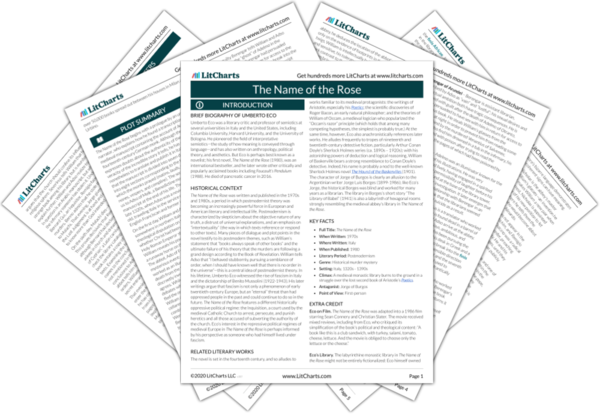For Adso, these fragments of books symbolize the larger whole of the lost library. He spends all day in a seemingly pointless task of salvaging fragments of burnt books, but he does this because he hopes that the parts of a few books might stand in for the whole collection. Just as William reconstructed the lost book of Aristotle’s
Poetics by finding traces of it in other books, Adso attempts to reconstruct a lost library from a few remaining fragments. This final passage provides another demonstration of the idea that lost books can be found again, which is a central motif in the novel. Adso calls his fragments a “lesser library” out of a recognition that all books are fragments, to a greater or lesser extent.
